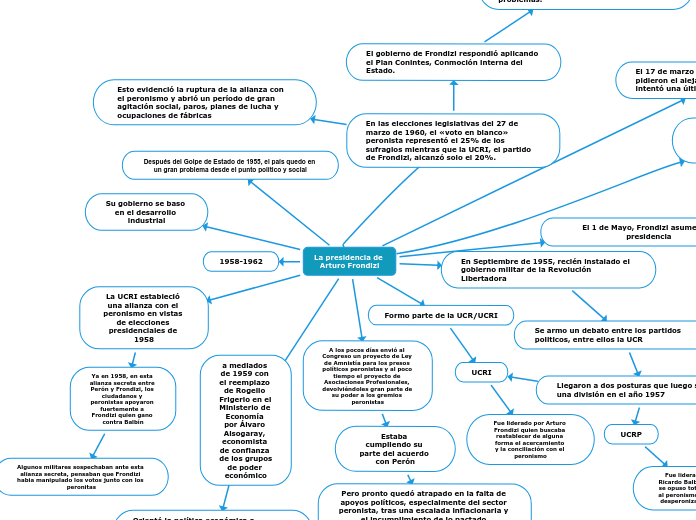DESARROLLO I
The Solar System is the gravitationally bound system of the Sun and the objects that orbit it, either directly or indirectly. Of the objects that orbit the Sun directly, the largest are the eight planets, with the remainder being smaller objects, the dwarf planets, and small Solar System bodies.
Períodos de ocurrencia de las influencias
Períodos sensibles
Momentos en el desarrollo en que la persona se encuentra particularmente dispuesta a ciertos tipos de experiencias
Plasticidad
Capacidad de modificación del desempeño
Período crítico
Crítico tiempo específico en que un suceso dado o su ausencia tiene impacto específico sobre el desarrollo
Impronta
Forma instintiva de aprendizaje en el cual, durante un período crítico en el desarrollo temprano, el animal joven forma un apego con el primer objeto en movimiento que ve, en general la madre
Influencias normativas y no normativas
Saturn is known most for its rings.
Galileo Galilei first thought it was an object with three parts: a planet and two large moons on either side.
Not knowing he was seeing a planet with rings, the stumped astronomer entered a small drawing — a symbol with one large circle and two smaller ones — in his notebook.
The rings are made of ice and rock and scientists are not yet sure how they formed. The gaseous planet is mostly hydrogen and helium.
INFLUENCIAS NO NORMATIVAS
A planet's day is the time it takes the planet to rotate or spin once on its axis.
Write down Saturn's day measured in Earth days.
Características de un suceso inusual que sucede a una persona en particular o de un suceso típico que ocurre en un momento inusual en la vida
INFLUENCIAS NORMATIVAS
Características de un suceso que ocurre, de manera similar, para la mayoría de personas de un grupo.
Cohorte
Grupo de personas nacido aproximadamente en la misma época
Generación Histórica
Grupo de personas que tienen una fuerte influencia de un suceso histórico importante durante el período formativo
Graduadas por la historia
Son acontecimientos significativos que moldean el comportamiento y actitudes de una generación histórica
Graduadas por la edad
Sucesos biológicos como pubertad, ingreso a la educación formal
Contextos del desarrollo
Uranus is an oddball. It has clouds made of hydrogen sulfide, the same chemical that makes rotten eggs smell so foul.
It rotates from east to west like Venus. Its tilt causes extreme seasons that last 20-plus years, and the sun beats down on one pole or the other for 84 Earth-years at a time.
Methane in the atmosphere gives Uranus its blue-green tint. It also has 13 sets of faint rings.
Cultura raza/ étnia
Grupo étnico
Grupo unido por orígenes, por sus ancestros, raza, religión, idioma u origen natural
Cultura
Modo total de vida de una sociedad o grupo
Factores de riesgo
A planet's day is the time it takes the planet to rotate or spin once on its axis.
Write down Uranus's day measured in Earth days.
Condiciones que aumentan la probabilidad de un resultado negativo del desarrollo.
Posición socioeconómica y vecindario
How long does it take for Uranus to go around the sun?
Combinación de factores económicos y sociales, incluyendo ingresos, educación y ocupación
Familia
Uranus has 27 moons that we know of. Five of the moons are large and the rest are much smaller.
Name these 5 moons.
Familia extendida
Red de parentesco multigeneracional de padres, hijos y otros familiares
Familia nuclear
Unidad de parentesco, relación económica y doméstica bigeneracional
Influencias sobre el desarrollo
Neptune is about the size of Uranus and is known for supersonic strong winds.
Neptune is far out and cold.
The planet is more than 30 times as far from the sun as Earth.
Neptune was the first planet predicted to exist by using math, before it was visually detected. Neptune is about 17 times as massive as Earth and has a rocky core.
MADURACIÓN
Neptune has thirteen moons that we know of and one more waiting for confirmation.
The largest moon is slightly smaller than Earth's Moon and has active volcanoes which erupt like geysers and eject nitrogen frost over the surface.
Name this moon and at least 4 others.
Desarrollo de una secuencia natural universal de cambios físicos y conductuales
AMBIENTE
How long does it take for Neptune to go around the sun?
Totalidad de influencias ambientales, no hereditarias, sobre el desarrollo
HERENCIA
A planet's day is the time it takes the planet to rotate or spin once on its axis.
Write down Neptune's day measured in Earth days.
Características innatas heredadas de los padres biológicos.
DIFERENCIAS INDIVIDUALES
Diferencias entre niños en características, influencias o resultados del desarrollo
Períodos del desarrollo
It was once considered a planet but in August 2006 the International Astronomical Union (IAU) downgraded the status of Pluto to that of “dwarf planet.”
Pluto is unlike other planets in many respects. It is smaller than Earth's moon; its orbit is highly elliptical.
It's a cold, rocky world with a tenuous atmosphere. Pluto is a very active ice world that's covered in glaciers, mountains of ice water, icy dunes, and possibly even cryovolcanoes that erupt icy lava made of water, methane or ammonia.
CONSTRUCCIÓN SOCIAL
Concepto a cerca de la naturaleza de la realidad que se basa en las percepciones o suposiciones socialmente compartidas
5 Etapas
prenatal, lactancia, primera infancia, segunda infancia, tercera infancia y adolescencia
Personalidad
Carácter
Está en función de los valores de cada sociedad, de su sistema educativo y cómo son transmitidos.
Temperamento
Se refiere a procesos de reactividad fisiológica y auto regulación, y que están influidas a lo largo del tiempo por la herencia, maduración y experiencia
Dominios del desarrollo
DESARROLLO PSICOSOCIAL
Patrón de cambio en emociones, personalidad y relaciones sociales
DESARROLLO COGNITIVO
Patrón de cambio en las capacidades mentales
DESARROLLO FÍSICO
Cambio en capacidades sensoriales, habilidades motoras y salud.
Estudios del desarrollo infantil
CONCEPTOS BÁSICOS
Ocurren en 3 dominios y 5 períodos que van de la etapa prenatal a la adolescencia
Escuelas de Desarrollo
Jupiter is a giant gas world that is the most massive planet in our solar system.
Its swirling clouds are colorful due to different types of trace gases.
And a major feature in its swirling clouds is the Great Red Spot, a giant storm more than 10,000 miles wide. It has raged at more than 400 mph for the last 150 years, at least.
Jupiter has a strong magnetic field, and with 75 moons, it looks a bit like a miniature solar system.
Erik-Erikson
Jupiter has a strong magnetic field, and with 75 moons, it looks a bit like a miniature solar system.
Name the 4 most known moons.
Desarrollo humano en el campo psicosocial
Integridad vs
desesperación
Madurez
Creatividad
vs
ensimismamiento
Adultez
Intimidad vs
aislamiento
Adultez joven
Identidad vs
difusión
11-18
años
Industriosidad
vs
inferioridad
6- a
11 años
Iniciativa vs
culpa
4 a 5 años
Autonomía
vs vergüenza
y duda
1 ó 2 y 3
años
Confianza vs
desconfianza
0-1
o 2 años
Jean Piaget
How long does it take for Jupiter to go around the sun?
DESARROLLO COGNOSCITIVO-INTELECTUAL
De operaciones formales
Mayor a 12 años
De operaciones concretas
7-12 años
De pensamiento intuitivo
4-7 años
PREOPERACIONAL
Preconceptual
2-4 años
PREOPERACIONAL
Sensoromotriz
0 -2 años
Sigmund Freud
A planet's day is the time it takes the planet to rotate or spin once on its axis.
Write down Jupiter's day measured in Earth days.
ESCUELA PSICOANALÍTICA
Genital
En la
pubertad
Latencia
6-
12 años
Fálica
(genital
locomotriz): 3-6
años
Anal
Uretral,
muscular: 1,5 – 3
años
Oral
Sensorial
respiratoria: 0 -
1,5 años
Arnold Geseell
DIAGNÓSTICO
EVOLUTIVO DE LA
CONDUCTA
Conducta Motriz
Conducta Adaptativa
Conducta personal-social
Conducta de lenguaje
Estudio del ciclo vital
Mars is a cold, desert-like place covered in dust. This dust is made of iron oxides, giving the planet its iconic red hue.
Mars shares similarities with Earth: It is rocky, has mountains, valleys and canyons, and storm systems ranging from localized tornado-like dust devils to planet-engulfing dust storms.
Crecimiento y desarrollo
Mars has two small moons.
Name these moons.
Desarrollo adulto tienen impacto en la manera como se desarrollan los niños
Más obvios en la infancia, ocurren a lo largo de la vida.
Actualmente
How long does it take for Mars to go around the sun?
Desarrollo humano va desde la concepción hasta la muerte.
Lewis Terman (1922.)
A planet's day is the time it takes the planet to rotate or spin once on its axis.
Write down Mars's day measured in Earth days.
Estudios Stanford sobre niños dotados
Programas diseñados
Seguimiento de los niños hasta alcanzar su adultez.
La psicología del desarrollo se vuelve ciencia
Earth is a water world, with two-thirds of the planet covered by oceans.
It's the only world known to harbor life.
Earth's atmosphere is rich in nitrogen and oxygen.
Its name originates from 'Die Erde,' the German word for 'the ground.'
Earth may once have had two moons, nowadays it has just one.
Gesell (1929)
How long does it take for Earth to go around the sun?
Estudio de etapas del desarrollo motor
Fundación de Institutos de Investigación (1930-1940)
A planet's day is the time it takes the planet to rotate or spin once on its axis.
Write down the Earth's day in hours.
Surgimiento de la Psicología Infantil como ciencia con expertos capacitados profesionalmente.
G Stanley Hall
La adolescencia no se consideró como un período independiente hasta inicios del siglo XX
Finales del siglo XIX
Características innatas e influencias externas
Primeros Enfoques
Venus is Earth's twin in size and has no moons.
Its surface has various mountains and volcanoes. Because of its thick, toxic atmosphere that's made of sulfuric acid clouds, Venus is an extreme example of the greenhouse effect. The average temperature on Venus' surface is 900 F (465 C).
Venus spins slowly from east to west, the opposite direction to most of the other planets.
The Greeks believed Venus was two different objects — one in the morning sky and another in the evening. Because it is often brighter than any other object in the sky, Venus has generated many UFO reports.
Charles Darwin
How long does it take for Venus to go around the sun?
Publicó notas del desarrollo sensorial, cognitivo y emocional de su hijo Dady, durante los primeros 12 meses de vida
Dietrich Tiedeman
A planet's day is the time it takes the planet to rotate or spin once on its axis.
Write down Venus's day measured in Earth days.
Desarrollo sensorial, motor, de lenguaje y cognitivo
BIOGRAFÍAS DEL BEBÉ
Diarios para registrar el desarrollo de un solo niño
Desarrollo Humano
Mercury is the smallest, only a little bit larger than Earth's moon. Mercury has no moon.
It experiences dramatic changes in its day and night temperatures: Day temperatures can reach a scorching 840 F (450 C), which is hot enough to melt lead. Meanwhile, on the night side, temperatures drop to minus 290 F (minus 180 C).
It also has a very thin atmosphere of oxygen, sodium, hydrogen, helium, and potassium and can't break-up incoming meteors, so its surface is pockmarked with craters, just like the moon.
Cambio Cualitativo
How long does it take for Mercury to go around the sun?
Cambio en el tipo, estructura y organización como en el caso del cambio de la comunicación no verbal a verbal.
Cambio Cuantitativo
A planet's day is the time it takes the planet to rotate or spin once on its axis.
Write down Mercury's day measured in Earth days.
Cambio en el número o cantidad, como el caso de la estatura
Desarrollo Infantil
Our Solar System has eight “official” planets which orbit the Sun.
Each planet is at a different distance from the sun. Name its position.
Proceso de cambio y estabilidad en los niños









